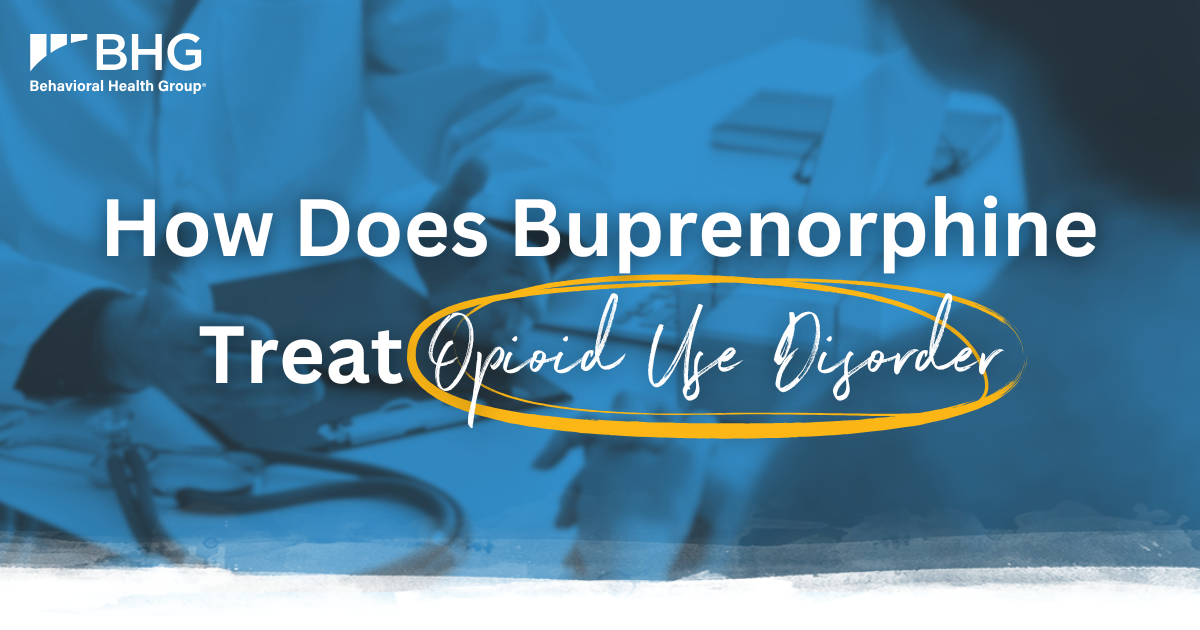
When it comes to treating opioid use disorder (OUD) and managing chronic pain, buprenorphine has become a widely used medication. It’s an FDA-approved medication that’s been around for years, offering people with a stable path toward recovery or relief from long-term pain.
Buprenorphine is different from traditional opioids or full agonists like methadone—and that difference is key. As a partial opioid agonist, it helps manage cravings and withdrawal symptoms without the intense highs or overdose risks associated with stronger opioids. This makes it an essential part of many evidence-based treatment plans today.
So, what is buprenorphine? How does it treat OUD? And why do so many providers swear by it for long-term recovery success?
Let’s dive in—here’s everything you need to know about buprenorphine and its role in overcoming opioid dependence.
What Is Buprenorphine?
Buprenorphine is a medication designed to help people overcome OUD. Its primary role is to reduce cravings and ease withdrawal symptoms, making it easier for individuals to focus on recovery without experiencing the intense highs that come with stronger opioids.
What makes buprenorphine unique is how it interacts with the brain’s opioid receptors. Unlike full agonist opioids, this medication is a partial opioid agonist, meaning it activates opioid receptors—just enough to relieve symptoms of withdrawal and cravings, but not enough to produce powerful highs or heightened risk of overdose linked to full opioids. This mechanism supports stability in recovery while lowering the risk of misuse.

Classified as a Schedule III medication, buprenorphine is often part of a broader treatment approach called medication-assisted treatment (MAT), or medications for opioid use disorder (MOUD). It’s available in several forms—including Suboxone, Subutex, and long-acting injections like Sublocade—offering flexibility based on individual needs and recovery goals.
Subutex vs Suboxone
Subutex and Suboxone are commonly prescribed forms of buprenorphine and are often mentioned together, though they have some important differences.
- Subutex contains buprenorphine only. It typically comes in tablet form.
- Suboxone is a combination of buprenorphine and naloxone. Naloxone is added to prevent misuse by blocking the effects of opioids if someone tries to inject the medication instead of taking it as prescribed. It’s available as both a tablet and a dissolvable strip.
One advantage: Suboxone and Subutex can be prescribed from both an Opioid Treatment Program (OTP) and an Office-Based Opioid Treatment (OBOT). This means that many patients can pick up their prescription at a local pharmacy, reducing the need for daily treatment center visits that are often required for methadone.
How Buprenorphine Works
Ever wondered how opioids affect your brain? It all comes down to how they interact with specific receptors - mainly, the mu-opioid receptors (MORs).
These receptors are central to how the body experiences pain relief and pleasure, and are closely linked to how OUD can develop overtime. When someone uses opioids like heroin or fentanyl, these receptors are fully activated, causing intense euphoria. With ongoing use, the brain can become reliant on these substances, increasing the risk of dependence and addiction.
Here’s how buprenorphine works, step by step:
- Partially Activates the Brain’s Opioid Receptors – Buprenorphine partially activates the opioid receptors in the brain, reducing cravings and alleviating withdrawal symptoms without producing the intense high linked to full opioids.
- Keeps Other Opioids from Taking Over - Buprenorphine also works by holding tightly to the brain’s opioid receptors. When it’s taken at the right dose, it fills up those receptors and makes it hard for other opioids - like heroin and fentanyl - to have any effect. That means even if someone uses another opioid, they’re unlikely to feel the same high. This helps reduce the urge to keep using, not just to avoid withdrawal, but also to chase a high that’s no longer there.
- Reduces Risk of Euphoria and Misuse – Unlike full opioids, buprenorphine lowers the likelihood of euphoria, making it less likely to be misused, supporting a more stable path to recovery.
- The Ceiling Effect for Safety – After a certain dose, buprenorphine’s effects level off. This ceiling effect reduces the risk of overdose and serious respiratory issues, which are common dangers with full opioids.
- Long-Lasting Effect – Buprenorphine stays active in the body longer, meaning most people only need to take a dose once a day. This helps patients stay consistent with their treatment plan and reduces the frequency of dosing.
Together, these effects make buprenorphine a powerful tool for breaking both sides of the opioid cycle - the drive to avoid withdrawal and the pursuit of euphoria.

What is Buprenorphine Used For?
Buprenorphine is used to treat both OUD and chronic pain, though how it's used varies depending on the condition.
Buprenorphine for Opioid Use Disorder
In treatment, buprenorphine is a key part of MAT, helping people stabilize physically, manage cravings and begin rebuilding their lives. It works on two fronts - by easing withdrawal and also making other opioids less effective if someone uses them.
However, medication is just one part of the recovery process. Most programs also include counseling (individual and group), support groups and other wraparound services to give people the full support they need in recovery.
Buprenorphine for Pain Management
Buprenorphine is also used to help people manage chronic pain, especially when they need a long-term alternative that may carry a lower risk of dependency compared to traditional opioids. Forms like Buprenex (injectable) and Butrans (patch) are commonly used for pain rather than OUD, helping reduce risks while still offering relief.
Side Effects of Buprenorphine
Like all medications, buprenorphine can cause side effects. Some are mild and manageable, while others are more serious and need to be watched closely.
Common Side Effects
- Headache
- Nausea or vomiting
- Drowsiness or fatigue
- Sweating
- Dry mouth
- Tooth decay
- Dizziness or tremors
- Fever
Serious Side Effects
- Respiratory distress (especially when mixed with other depressants)
- Dependence or withdrawal (if stopped suddenly)
- Overdose (rare, but possible if not taken as directed—especially if misused with other substances)
It’s really important to take buprenorphine under medical supervision and to work with your provider on a plan for dosing and tapering, especially if you ever decide to stop.

Benefits of Buprenorphine
So, why do so many treatment professionals recommend buprenorphine? Here’s what makes it such a valuable part of recovery.
Reduces Cravings and Withdrawal Symptoms: Buprenorphine helps you feel like yourself again so you can focus on rebuilding your life—not just getting through another day.
Helps Reduce the High from Other Opioids: When taken as prescribed, buprenorphine blocks other opioids from attaching to the brain’s receptors - making them less effective. This helps take away the rewarding feeling that often keeps people stuck in the cycle of use.
Lower Risk of Overdose: Thanks to its ceiling effect, buprenorphine is far less likely to cause fatal respiratory depression, even at higher doses.
Can Be Prescribed by Qualified Providers: Unlike methadone, which is only available at OTP clinics, buprenorphine can be prescribed at regular medical offices, offering more privacy and convenience.
Supports Long-Term Recovery: By stabilizing brain chemistry and reducing the urge to use, buprenorphine can make it easier to return to work, maintain relationships and stay committed on the path to healing.
Is Buprenorphine the Same as Suboxone?
Although they are often mentioned together, buprenorphine and Suboxone are not exactly the same, but they’re closely related.
Suboxone is a branded medication that uses a combination of buprenorphine and naloxone. buprenorphine can also be prescribed on its own (like in Subutex). The naloxone in Suboxone helps reduce the risk of misuse, especially through injection by a provider.
Both medications can be prescribed in OTP or OBOT settings, but OBOT is more flexible—it allows patients to fill their prescriptions at a pharmacy, so they don’t have to frequently visit a treatment center. That flexibility alone makes treatment more accessible for many people who are ready for change.

Learn More About Buprenorphine Treatment at BHG
There are plenty of reasons why buprenorphine is trusted by so many—and at Behavioral Health Group (BHG), we’re here to walk you through every step of the process. Recovery can feel overwhelming, but you don’t have to do it alone. We offer everything you need in one place—buprenorphine treatment, counseling, case management and more.
Plus, we’re one of only 4% of programs nationwide that provide all FDA-approved medications, giving you more options to find what works best for you.
Taking the first step toward recovery is a big decision, but we’re here to support you. If you or someone you care about is ready to begin, reach out to us at 844-535-7291 or find a BHG treatment center near you—let’s make it happen together.
For healthcare providers and partners, your patients deserve the best care. Call our dedicated referral line at 866-763-2244 or submit a referral form online, and we’ll ensure they get the support they need right away.
Frequently Asked Questions
Buprenorphine can interact with other medications, especially those that depress the central nervous system like benzodiazepines (e.g., Xanax), alcohol or sleep aids. Combining these substances can increase the risk of serious side effects, including respiratory depression.
Always let your provider know about all medications, supplements or substances you’re taking so they can create a recommended treatment plan that prioritizes your safety and minimizes risks.
There’s no one-size-fits-all answer. Some people use buprenorphine for a short period to manage withdrawal symptoms during the early stages of recovery, while others stay on it for months or even years to support long-term stability.
The length of time you remain on buprenorphine should be individualized and guided by your progress and goals. Regular check-ins with your provider help ensure your treatment plan is working for you and can be adjusted as your needs change.
Yes, in many cases, buprenorphine is considered a safer alternative to continued opioid use during pregnancy. It can help reduce the risk of relapse, stabilize withdrawal symptoms and provide greater consistency in care. Studies have shown that buprenorphine can support both mother and infant when taken under proper medical supervision.
If you are pregnant or breastfeeding, it’s important to work with an experienced provider who can monitor your health and the baby’s well-being throughout treatment. Your provider may also discuss other FDA-approved options, such as methadone, to determine the best and safest plan for you and your baby.
Standard drug tests typically screen for common opioids like heroin or oxycodone but may not detect buprenorphine unless the test is specifically designed to do so.
Some employers or treatment programs include buprenorphine in their testing panel. If you're concerned about drug testing, it’s a good idea to ask what substances are included in the panel and discuss any prescriptions with your provider ahead of time.
